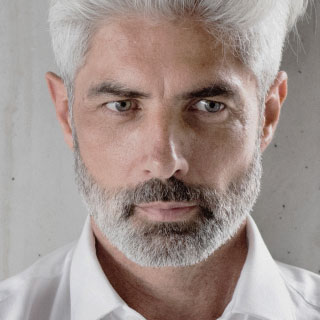What You Need to Know Beforehand
Capsular fibrosis / Contracture
After implantation of any foreign object, such as a pacemaker or a breast implant, the natural healing response of our body results in the formation of a surrounding layer of connective tissue, a so-called capsule. Hence, every woman with a breast implants has a capsular envelope around it. The term capsular contraction or capsular fibrosis describes a condition where the capsule contracts along its collagen fibers and becomes eventually smaller than the implant itself. This results in a visible change of the implant’s position and aesthetic appearance, in some cases associated pain and discomfort. Numerous factors may trigger this process, especially possible bacterial contamination (biofilm), which may result in an inflammatory reaction leading to stimulation of fibroblasts and subsequently capsular contraction. The texturing of implant’s silicone envelope and its sterile handling during the implantation may play an important role in triggering this process.
Does every capsular fibrosis need to be operated?
Not necessarily. It depends on the severity grade (Baker I to IV) as assessed in clinical examination based on the patient´s symptoms. Generally, if discomfort or pain, visible change of implant position or asymmetry are present, revision surgery may be indicated. Newest generation implants have shown in studies that the likelihood of capsular fibrosis is significantly reduced compared to data from studies with older breast implants. Some manufacturers give life time guarantee that includes severe grades of capsular contraction and facilitate new implants free of charge in case of revision surgery.
Which implant brand should i choose?
Your preferences and anatomic proportions are key in finding the implant brand best suited to you. All brands we use are major global brands, certified, approved and latest generation.
They all provide you with a life-long guarantee for the implant and, in some cases, even a reimbursement for re-operation in case of late-onset complications.
Motiva: New kind of responsive gel that imitates natural breast movement in motion, extremely low risk of capsular fibrosis in 6 years of survey, natural and pleasant touch, only available in round shape. ➯ Motiva Novel
B-lite: Only implant brand on the market using a silicone gel crosslinked with small hollow microspheres making the implant up to approx. 30% lighter than other silicone implants. Less weight means less strain on the tissues decelerating the weight-induced sagging process and making recovery less painful. ➯ Reduced Pain and Accelerated Recovery
Nagor: Highest possible projection (i.e. breast forward distance from the chest wall in relation to diameter) amongst all anatomic shape implant brand, our choice for all non B-Lite anatomic augmentations. ➯ Nagor
What are implants made of and which shapes are available?
All current breast implants are made of medical grade silicone. The silicone molecules are three-dimensionally linked, which minimizes the possibility that the cohesive gel leaves the silicon shell even in the extremely unlikely case of an implant rupture. The silicon shell surface ranges from smooth to different degrees of texturing, depending upon brand and model. In case of B-lite implants, the medical grade silicone gel features additional microsphere inclusions, resulting in less weight for a given size.
Round: Form of a compressed sphere, offering some more fullness to the upper part of the breast (upper pole)Anatomic: Form of a teardrop, these form stable implants do not change their shape if you hold them upside down
Ergonomic Gel: The gel is moving in the shell depending on posture and motion, just like a natural breast
For most implants, there are three to four degrees of projection (breast forward distance from the chest wall) available – from low, moderate, high and extra high.
Please do not be misguided the common misconception that anatomic implants only can give natural results whereas round implants can create a prominent décolleté. The final shape of your augmented breast results does not only depend on the shape and the positioning of the implant, but also on the quantity, elasticity and shape of your natural breast tissue. Therefore, natural and more augmented looks can be achieved by both anatomic and round implants, and your anatomy will decide which implant we will recommend after a thorough evaluation for your individual case.
Where is the scar?
In case of implant change surgery, we normally use the existing scars and make additional scars only in case it is absolutely necessary. Those scars are typically found in the following locations:
Inframammary fold: In the fold under the breast, slightly visible scars, mostly covered by the breast itself.
Periareolar: Circular, around your nipple (areola), barely visible between the normal breast and the hyperpigmented skin of the areola.
Vertical: In cases where a breast uplift is necessary, additional vertical scars may run in the the midline of the breast, extending downwards into the inframammary fold.
After Surgery and Beyond
Aftercare
The Ocean Clinic is dedicated to avoiding any unnecessary pain. We routinely perform a temporary local nerve block of relevant sensory nerves, thus considerably lowering the pain in the early post-operative period. With an additional combination of one or two painkillers, patients should be pain free. Our suturing is absorbable so there is no need to remove stitches. Postoperative lymphatic drainage is advisable after this kind of procedure.
We will provide you with a special compression garment to be worn for about 4 to 6 weeks. Do not lift any objects beyond 8kg and avoid sports involving weights during this period.
We will provide you with a special bra to be worn for around 4 - 6 weeks. Do not lift any objects over 5kg and avoid sports involving weights during this period.
Relevant risks
There are non-specific risks that are connected to any kind of surgical procedures like hematoma, infection, seroma. Capsular fibrosis / contraction can reoccur. However, with modern breast implants the possibility of recurrence is significantly lower and the time until recurrence is considerably longer.
There is no connection between breast implants and breast cancer. Breast implants have no impact on the detection or the timely diagnosis of breast cancer. Rare cases of anaplastic large cell lymphoma (ALCL), associated with breast implants, have been described throughout publications. This condition is very rare but may develop into a serious health problem if not detected and adequately treated. In such cases, typically the implant is removed including its surrounding capsule. Breast implant change is a very common procedure in the field of plastic surgery. In experienced hands, it is a safe and straightforward operation with highly rewarding results.
Will i have to change my implants again?
If you do not experience any problems and are still satisfied with the appearance, there is no reason why you should change your implants at any particular time. Keep in mind, that in spite of all lifetime guarantees offered by implant manufacturers and some less serious surgeons, implants are not lifelong devices. Any patient considering breast implants should consider that breast augmentation with implants may well entail further procedures at some point in the future.
Alternative treatments
If the patient no longer wishes to have implants, they can generally be removed with a straightforward procedure. However, in many cases, the remaining pre-expanded breast tissue will result in a sagging and empty appearance. This may be corrected by a breast uplift, autologous fat grafting or a combination of both procedures.
Fat grafting is a recommended alternative technique if you have sufficient body fat available. Multiple sessions could be necessary, as the body absorbs a certain amount of transplanted fat. It is a good option if you wish to enhance your breasts by one or two cup sizes or in combination with a breast lift.
Our experience
Over the past 10 years, we have performed more than1000 breast augmentations and breast implant changes. Notably, implant change procedures require more experience and a good surgical concept, as the breast tissues have already been surgically altered.
We strive to understand which breast shape a patient really desires and to explain whether, and if so, how, this goal can be achieved. We are the authors of multiple peer-reviewed scientific publications on breast surgery, particularly breast enhancement with implants, and continuously give lectures on this subject at international scientific conferences and symposiums. We believe in science and evidence-based evolution of technology and so make all new implant technologies available to our patients. We believe in concepts, not in singular implant brands.










